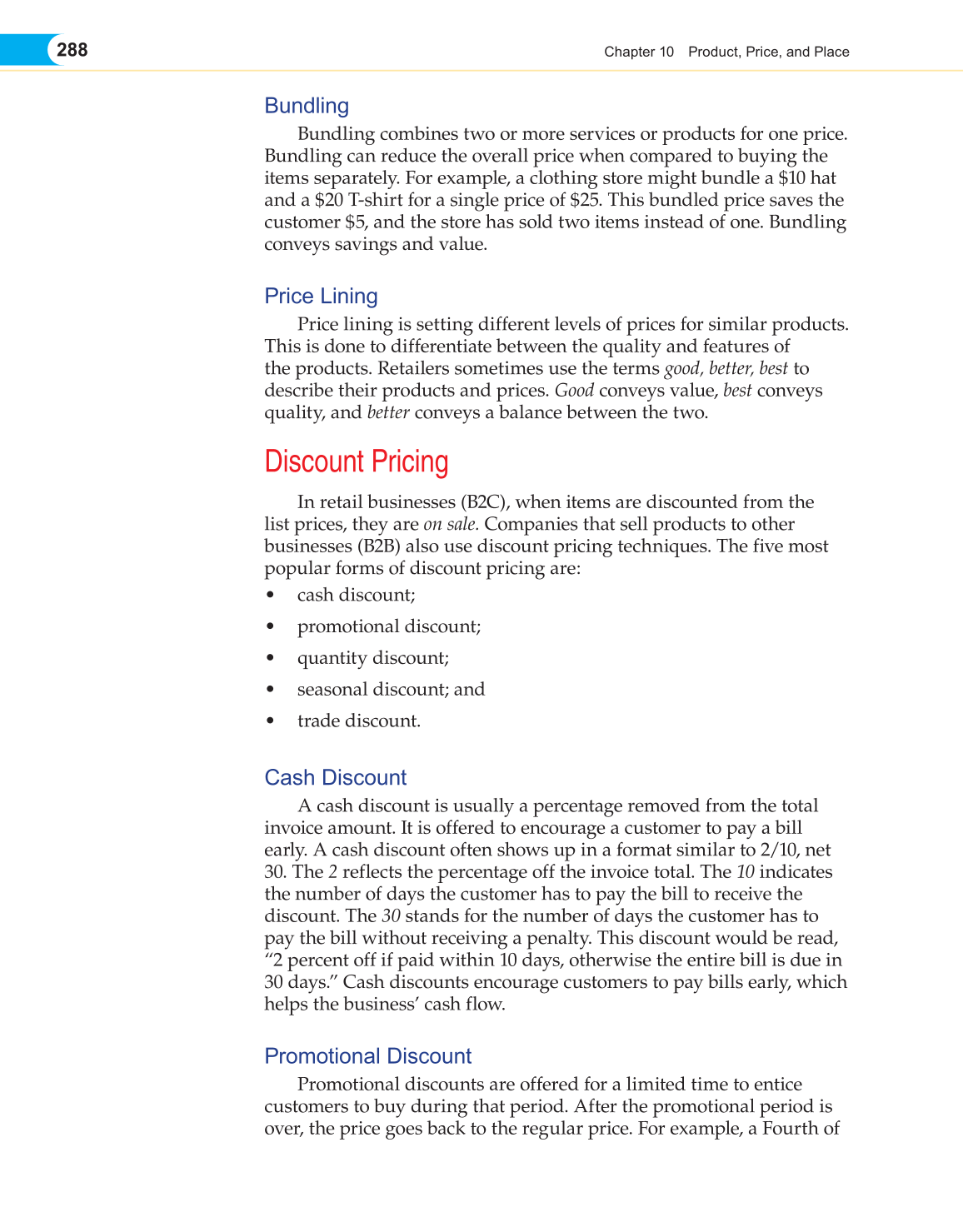288
Chapter 10 Product, Price, and Place
Bundling
Bundling combines two or more services or products for one price.
Bundling can reduce the overall price when compared to buying the
items separately. For example, a clothing store might bundle a $10 hat
and a $20 T-shirt for a single price of $25. This bundled price saves the
customer $5, and the store has sold two items instead of one. Bundling
conveys savings and value.
Price Lining
Price lining is setting different levels of prices for similar products.
This is done to differentiate between the quality and features of
the products. Retailers sometimes use the terms good, better, best to
describe their products and prices. Good conveys value, best conveys
quality, and better conveys a balance between the two.
Discount Pricing
In retail businesses (B2C), when items are discounted from the
list prices, they are on sale. Companies that sell products to other
businesses (B2B) also use discount pricing techniques. The five most
popular forms of discount pricing are:
• cash discount;
• promotional discount;
• quantity discount;
• seasonal discount; and
• trade discount.
Cash Discount
A cash discount is usually a percentage removed from the total
invoice amount. It is offered to encourage a customer to pay a bill
early. A cash discount often shows up in a format similar to 2/10, net
30. The 2 reflects the percentage off the invoice total. The 10 indicates
the number of days the customer has to pay the bill to receive the
discount. The 30 stands for the number of days the customer has to
pay the bill without receiving a penalty. This discount would be read,
“2 percent off if paid within 10 days, otherwise the entire bill is due in
30 days.” Cash discounts encourage customers to pay bills early, which
helps the business’ cash flow.
Promotional Discount
Promotional discounts are offered for a limited time to entice
customers to buy during that period. After the promotional period is
over, the price goes back to the regular price. For example, a Fourth of
